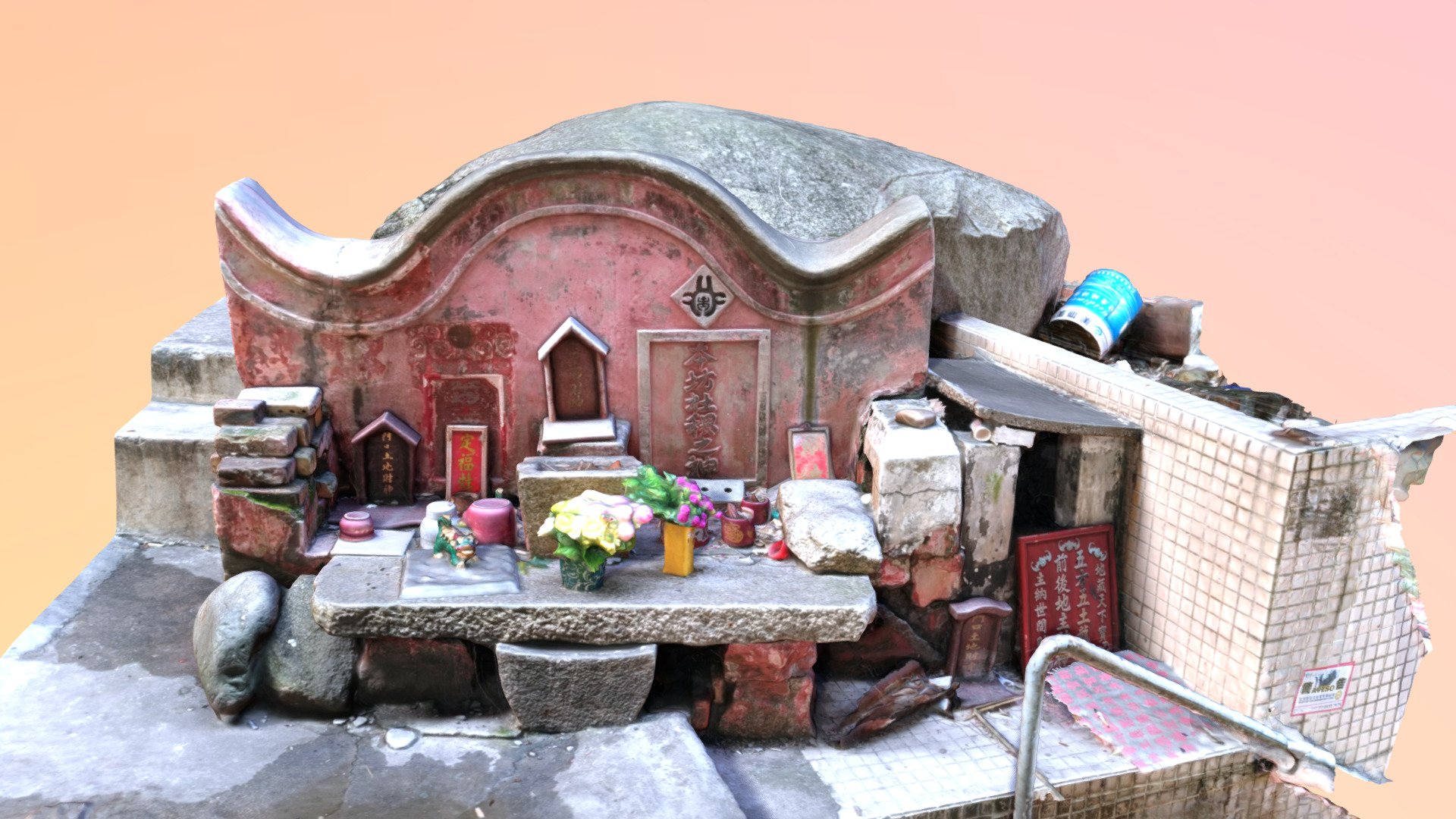
定福社稷和本坊土地社稷福德之神(灰爐石級)
sketchfab
In the past, the lime kiln village in Macau was the main building material for construction. This area was originally at the southern end of Wanhai, and the West Wall's Fort of Our Lady was on the edge of the city. The coastline was not inhabitable due to rocky reefs, making it a remote and sparsely populated area. This led to the location of the Macau Royal Foundry being chosen here. The villagers in Li Xi also wanted to get rich quickly, so they developed Li Xi Road first, followed by parallel streets named Ren, Yi, Li, Zhi, and Ming. However, the smoke-filled air made the green hills, golden water, and red walls lose their color, and the Chinese and Portuguese people had racial segregation due to skin and hair colors. Therefore, as early as 1869, Portugal's Harbor Plan intentionally separated the black-and-white colors from the red and blue in the lime kiln village. From 1871 to 1910, a sea wall was built by filling in the coastline, and part of the villages were demolished. The lime kiln village declined, but the buildings with watered-down lime powder became more popular. The mutual dependence and coexistence between city and countryside is a true reflection of the division of heaven and earth - the oceanfront European companies and wealthy expatriates' grand mansions stood in stark contrast to the dilapidated double-story villas at the foot of the mountain, which were once the residences of the elite. In 1993, when Lake View Garden was developed, the stone steps of the lime kiln village were renovated and eventually assimilated into the world of steel-reinforced concrete, resulting in the demolition of two temples on the streets and alleys nearby. Today, the land god statue is still located at the entrance of the lime kiln village, but the double-stone temple next to number 36 is a new addition or relocated from elsewhere. The land god statue at the entrance bears the inscriptions "Defu Shizhi" and "Benfang Tudi Shizhi Fudao Zhenren," which is a combination of two temples. The original stone wall behind the temple, stretching across the roadside, is a permanent coordinate left by nature for city development - the massive stone has been passed down from the west and is resistant to human displacement. From top to bottom, the stone connects with the stone steps. Old maps show that the vertical flat surface of the stone was used as the foundation of old houses. In the past, the land god statue generally faced the entrance of the lime kiln village, and pedestrians could see the deity by looking up from the stairs; it's like a hidden Peach Garden layout. However, after the 16th house at the mouth of the lime kiln was demolished to make way for a public street, the land god statue turned towards the new garden built on the east side, and pedestrians began to pass by the deity without noticing it. The road changed, and the deity leaned against the back of the high-rise buildings, casting a shadow over its face, which is why the stone inscription is covered in thick dust.
With this file you will be able to print 定福社稷和本坊土地社稷福德之神(灰爐石級) with your 3D printer. Click on the button and save the file on your computer to work, edit or customize your design. You can also find more 3D designs for printers on 定福社稷和本坊土地社稷福德之神(灰爐石級).
